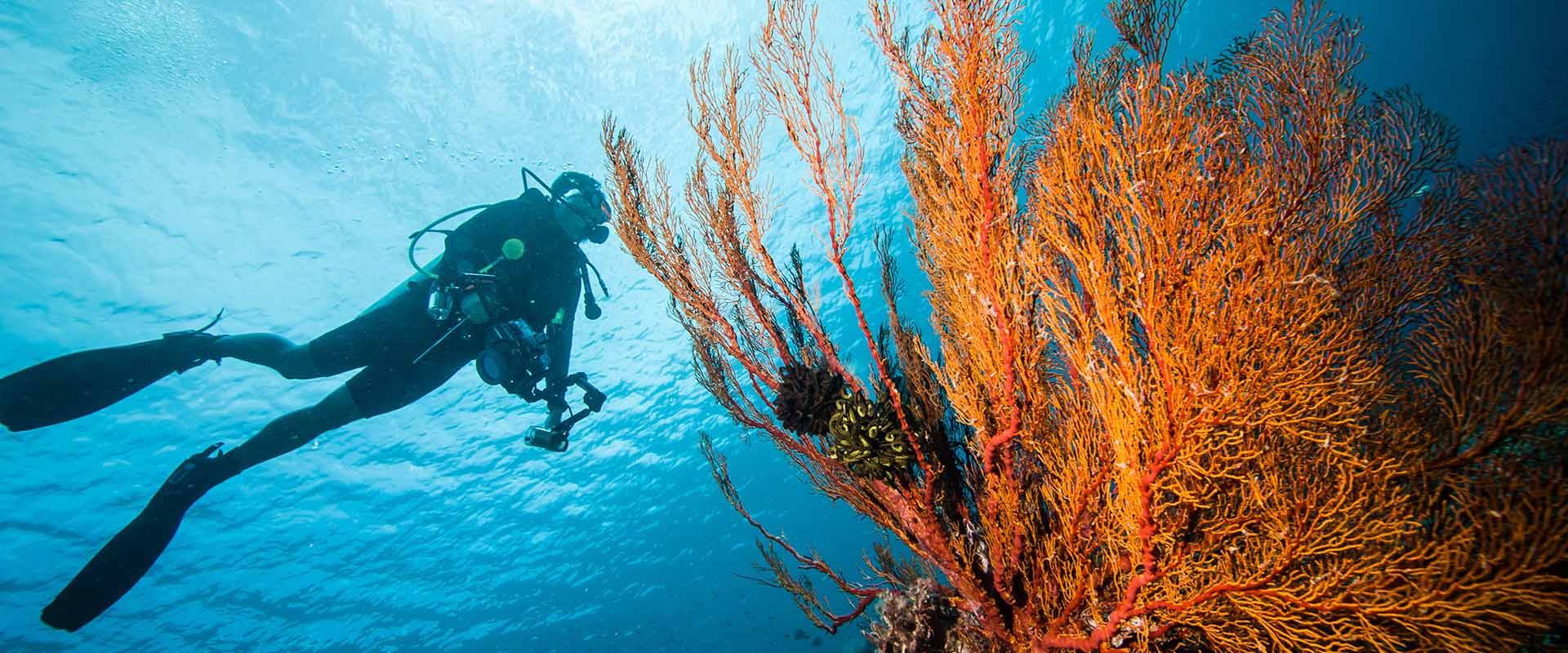Liveaboard Diving in Derawan
What to Expect On a Derawan Liveaboard
Liveaboard diving to Derawan offers the chance for some real unexplored dive experiences. The Derawan Islands are situated in the province of East Kalimantan, Indonesia. They make up a total of 31 islands, including Derawan, Maratua, Kakaban, Sangalaki, Panjang, and Samama. The only 2 inhabited islands are Derawan and Maratua. These islands can really only be appreciated by a Derawan liveaboard. They are very isolated, and distances between islands are not practically covered by day boats.
Derawan Underwater
A liveaboard from Derawan means visiting the Coral Triangle, an area known to have one of the richest biodiversities on the planet. To date, 872 species of fish and 507 coral species have been counted here. In addition, there are a number of protected invertebrate species, including 5 varieties of giant sea clams, and coconut crabs.
This region is truly stunning and well worth including on your Derawan liveaboard itinerary, as it is home to some of the most impressive natural phenomena. Every year, over 15 000 female sea turtles return to these islands, very often traveling thousands of miles, just to breed. The Derawan Islands are also famous for holding 2 ponds that contain ëunpoisonedí jellyfish. These ponds can be found on Kakaban and Maratua. Falling sea levels trapped these jellyfish within natural basins on the islands. Unable to escape, they slowly evolved over thousands of years to lose their ability to sting as it was no longer necessary for survival.
Dive Sites Of Derawan
The islands remain largely unexplored by divers and many Derawan liveaboard itineraries will include exploratory dives. There are several sites around Derawan Island that provide a good mix of both muck sites and drift dives. The muck sites attract all sorts of macro species, including the highly venomous blue-ringed octopus, frogfish of various colours, harlequin shrimp and ghost pipefish. The drift sites attract numerous large pelagic species, including several sharks. Oceanic whitetip and blacktip reef sharks, as well as leopard and nurse sharks can all be seen here. Great schools of barracuda are also a common sighting.
Sangalaki is a cleaning station, and where both mantas and sea turtles accumulate. The fairly strong currents around this island carry with them rich nutrients from deeper waters. The mantas can usually be seen here all year round.
The island of Panjang sees very little current, and as a result, prolific muck sites have formed. Batfish, crocodile fish, pygmy seahorses and nudibranchs are just some of the species you will find here.
Many sites around the islands have yet to be visited by divers, and you are likely to complete several exploratory dives while on your Derawan liveaboard dive trip. Several hundred caves are estimated to be totally unexplored, providing the experienced cave diver a somewhat exciting prospect. These caves typically originate on the islands, and have exits on the reefs themselves.
Top Tips For Divers
Some sites that a Derawan cruise visits can be particularly exposed to strong, shifting currents. An invaluable piece of equipment to take, if you donít already do so, is an SMB and a finger spool. In case an ascent occurs in a slightly unplanned location, your boat crew will be able to mark your location and keep you safe.
Getting To Derawan
The most direct route to Derawan, where your Indonesia liveaboard vessel awaits, is via Singapore. The journey is slightly longer than travelling to many other remote regions in Indonesia, but the Derawan Islands are home to certain spectacles that can only be found here.
Having landed in Singapore, catch a flight to Balikpapan, and then Berau. From here, there is a 2 hour drive through the countryside of Kalimantan to the port of Tanjung Batu. And finally, there will be a 30 to 45 minute ride by speedboat to Derawan.
Derawan Diving Reviews
- 7.6 Good
- 7.6 Good
- Franck D
France
pas assez de gros, en particulier des requins visibilité très moyenne, voire médiocre
Diving Derawan in May on the Ambai











